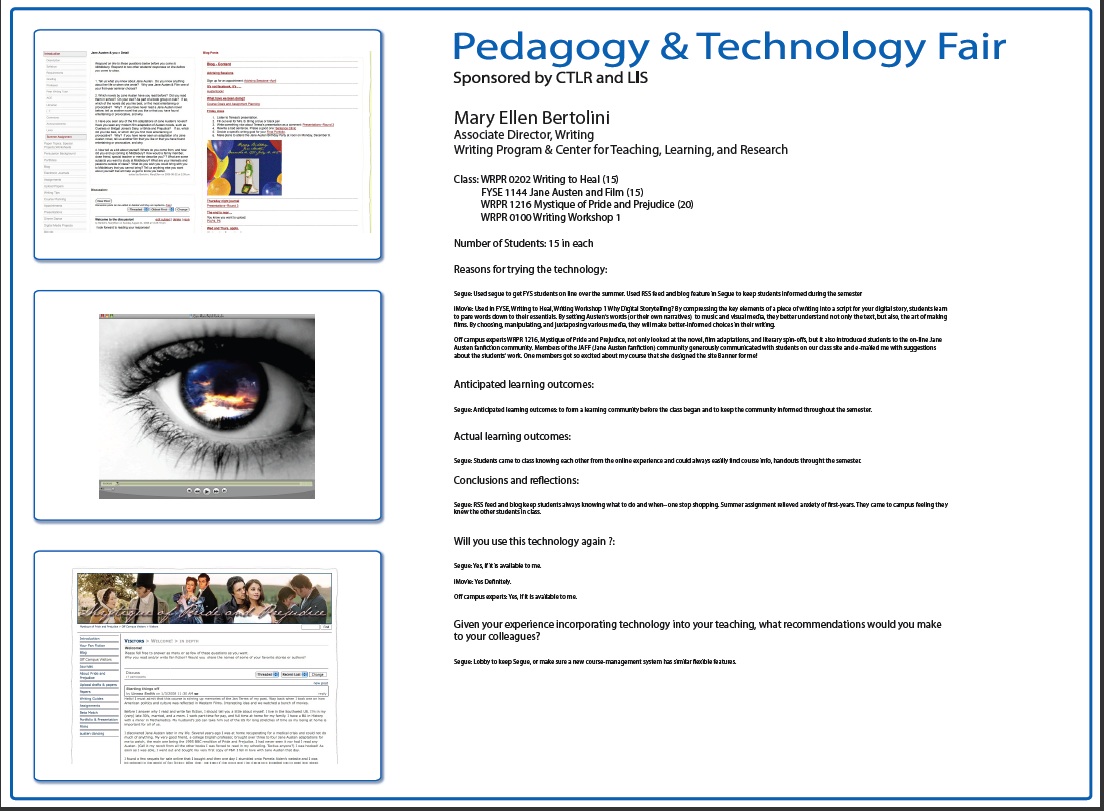Our CCCC Presentation:
Healing and Transgression: Exploding Identity Genres
Session: B.25 on Mar 22, 2007 from 12:15 PM to 1:30 PM Cluster: 109) Creative Writing
Type: Concurrent Session (3 or more presenters) Interest Emphasis: race/ethnicity
Level Emphasis: 4-year
“Writing to Heal,” “Voices Along the Way,” “ The Art of the Personal,” and “Writing Across Differences”—these writing courses at x College challenge students to explore issues of identity by confronting loss, nationality, sexuality, class, gender, spirituality and ethnicity. In this presentation, three faculty members from Middlebury College discuss hybrid writing assignments from courses that combine creative and critical writing with the use of digital media. Discussing and writing about complex issues of identity and loss have transformed the lives of students taking these courses. Teaching these issues has involved personal and professional changes in the lives of the faculty members as well.
Hybrid genres that combine critical with creative writing provide students with theoretical knowledge and background from which to better explore their lives and identities in a thoughtful, informed manner. Digital media projects from weblogs to digital stories that combine words, music, photography and video encourage students to explore issues of their own identity through media often more in tune with 21st century students than conventional linear forms of writing. The music and visual images students choose in these projects often evoke deeper, tighter writing than students have produced before. A combination of formal and informal writing in public and private writing spaces allows students the opportunity to write for self, for others, or for a private few.
The different kinds of disclosure and identity writing in these courses explode the typical boundaries of assignments and genres when memoirs transform into short stories and research papers and projects use theoretical, creative and personal sources as evidence. In the process that unfolds in these classes, students and faculty learn to control and define their own narratives and explore who they have been, who they are becoming, and who they might yet be. Writing and media assignments that encourage students to understand their own identities better can lead students to understand and imagine better the identity of others. These assignments and courses have transformed personal pain into healing and forgiveness and have transformed self-disclosure into both self-acceptance and political mobilization.
Continue reading →


 Anything they heard or observed that day was transitory, fleeting while
Anything they heard or observed that day was transitory, fleeting while